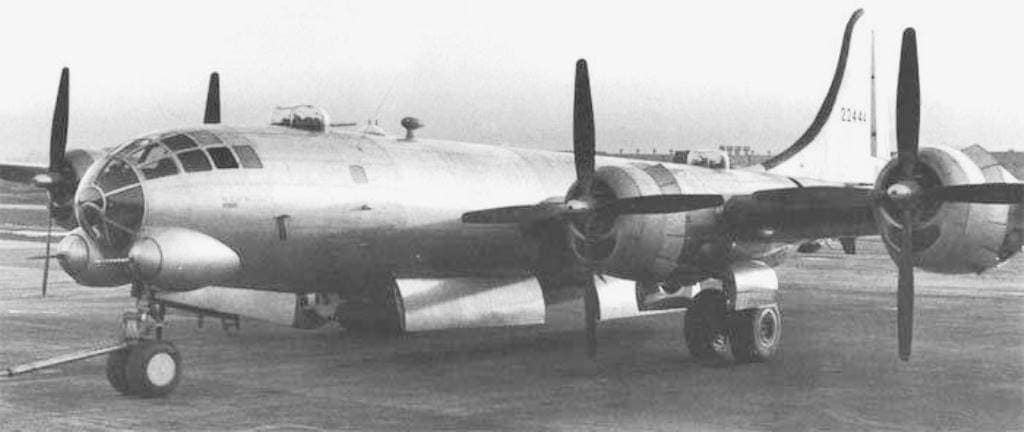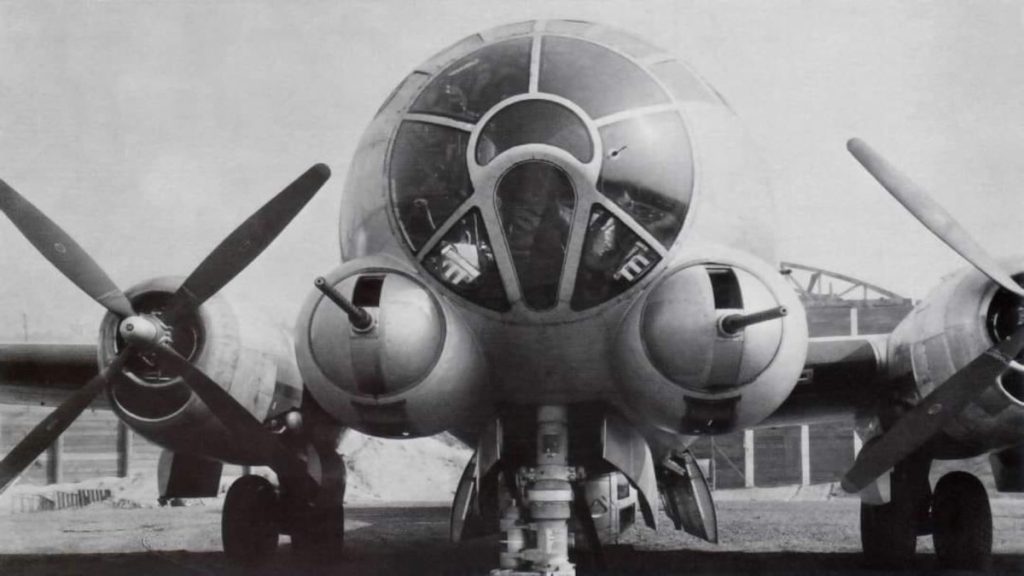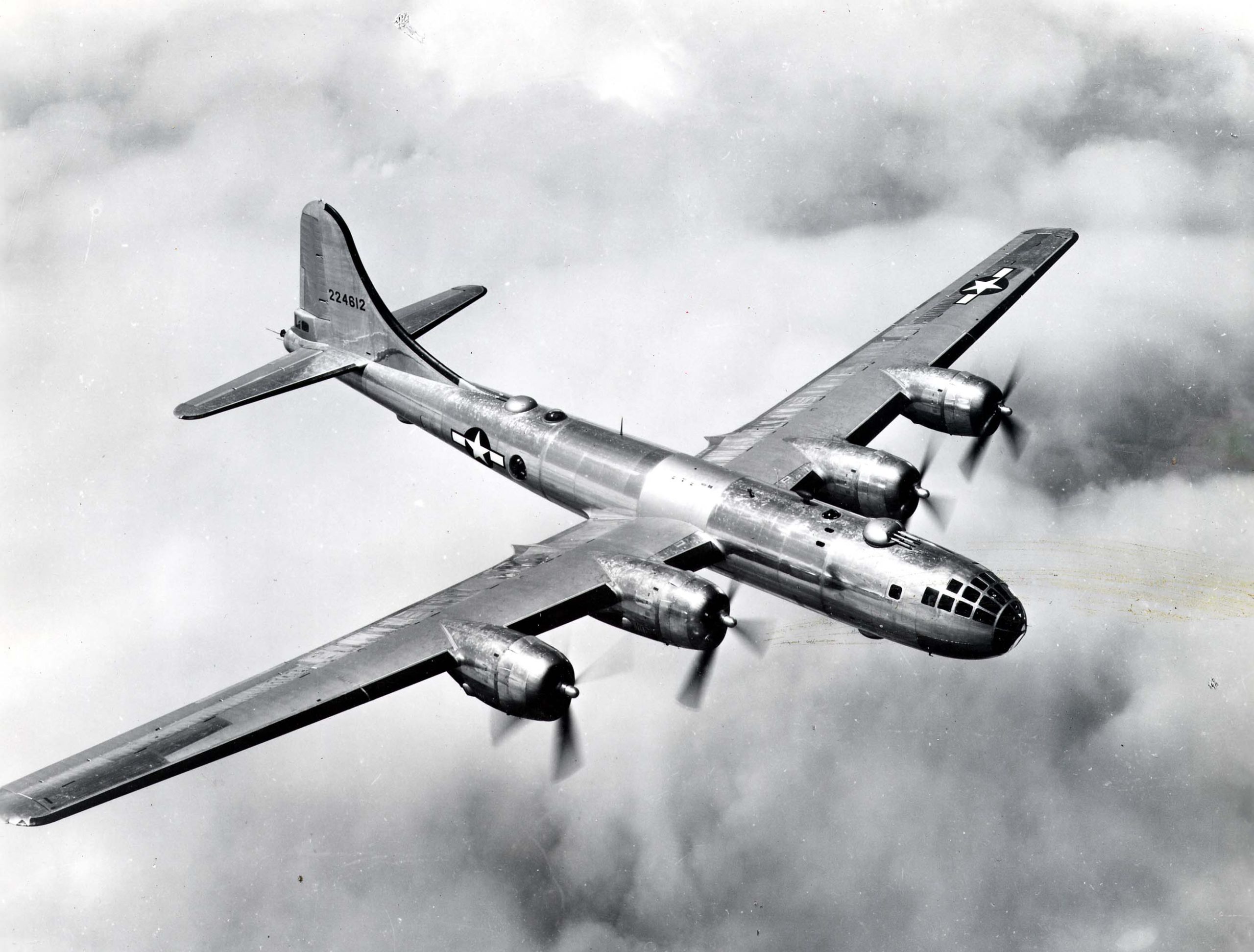In the heat of World War II, the Boeing B-29 Superfortress emerged as a game-changer, bringing unprecedented firepower and range to the Allied forces.
Central to its formidable reputation was the General Electric remote turret system. A cutting-edge technology allowing gunners to control multiple turrets from a distance.
However, there was a contingency plan almost changed the course of aerial combat—the introduction of manned turrets.
Enter Project S68.
The Genesis of Project S68
In October 1944, a specific B-29 airframe, serial number 42-2441, was selected for a unique modification under Project S68.
The core idea? Evaluate the potential of manned turrets in case the remote system faced operational challenges.
Engineers transformed this airframe into a one-of-a-kind bomber, blending both new and traditional gunnery systems.

Unique Armament Configuration
The most noticeable change was in the nose of the aircraft, where engineers installed a pair of Emerson Model 136 barbettes.
These barbettes housed single .50 caliber machine guns, adding a different dimension to the B-29’s firepower.
This nose armament was a significant departure from the typical B-29 setup and offered a glimpse into a hybrid approach combining manned and remote turrets.
For the upper turrets, the standard remote systems were replaced with Martin manned turrets.
These provided a traditional hands-on gunnery experience, allowing the gunner to have direct control and possibly quicker reaction times in certain combat scenarios.
The lower turrets saw even more innovation.
Engineers fitted a Sperry Model A-2 ball turret in the forward position and a semi-retractable A-13 turret aft.
This combination aimed to cover a broad range of defensive angles while maintaining some of the operational advantages of retractable systems.

Sighting Blisters and Flexible Mounts
On the fuselage sides, the sighting blisters, usually used by gunners to control the remote turrets, were replaced.
In their place, single .50 caliber guns on flexible mounts were installed, resembling the configurations seen on other USAAF heavy bombers of the time.
This change was part of the broader experiment to see if more conventional armament systems could offer tactical advantages.
Tail Armament: The Constant Factor
Interestingly, while much of the B-29’s armament underwent experimental changes under Project S68, the tail section remained untouched.
The tail armament, a crucial part of the B-29’s defensive strategy, stayed the same, possibly reflecting its effectiveness and the lesser need for modification.
The Outcome: Why Manned Turrets Didn’t Make the Cut
Despite the extensive modifications and testing, Project S68 didn’t move beyond the evaluation phase.
The reason? The General Electric remote turret system performed exceptionally well in operational service.
It offered superior flexibility, reduced crew risk, and allowed for centralized control manned turrets simply couldn’t match.
The success of the remote system meant reverting to manned turrets would have been a step backward in terms of technology and efficiency.
Project S68 was shelved, and the B-29 Superfortress continued its service with its state-of-the-art remote-controlled armament, solidifying its place in history.

Legacy of Project S68
While Project S68 didn’t lead to widespread changes in B-29 armament. It served as a critical experiment in understanding the balance between manned and automated systems.
The lessons learned contributed to future aircraft designs, where automation continued to play an increasingly vital role.
The project also stands as a testament to the relentless pursuit of innovation during wartime.
The willingness to explore, experiment, and push the boundaries of existing technology. Even when the current systems were performing well, highlights the drive for continuous improvement.
In conclusion, Project S68 was a fascinating chapter in the history of the B-29 Superfortress.
It demonstrated even in the face of successful technology, exploring alternatives is crucial.
The B-29 continued to dominate the skies, but its story could have been different if the manned turret experiment had proven necessary.
Final Thoughts: The What-Ifs of Project S68
Project S68 raises intriguing questions about how aerial combat might have evolved if manned turrets were deemed necessary.
Would the B-29 have been as effective? Would future bombers have incorporated more manned systems, or would they have shifted towards automation even sooner?
These questions highlight the ever-present tension between man and machine in military technology.
While automation often offers efficiency and safety. The human element remains critical, especially in complex and unpredictable combat environments.
Project S68 is a reminder innovation and about embracing the latest technology. It’s also about understanding when to hold onto proven systems.
The B-29’s remote turret system was ahead of its time, and its success ensured the manned turret concept remained a fascinating what-if rather than a battlefield reality.
#LivingWithGravity


































